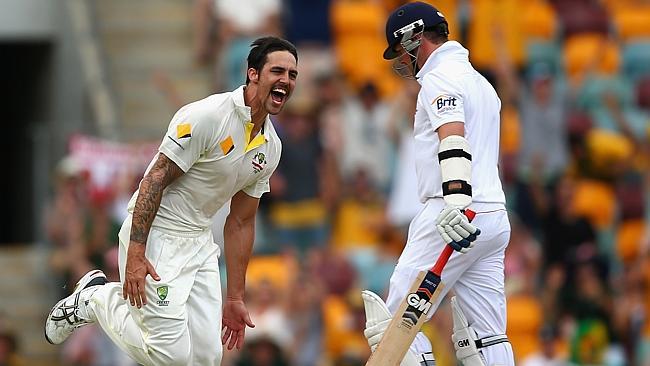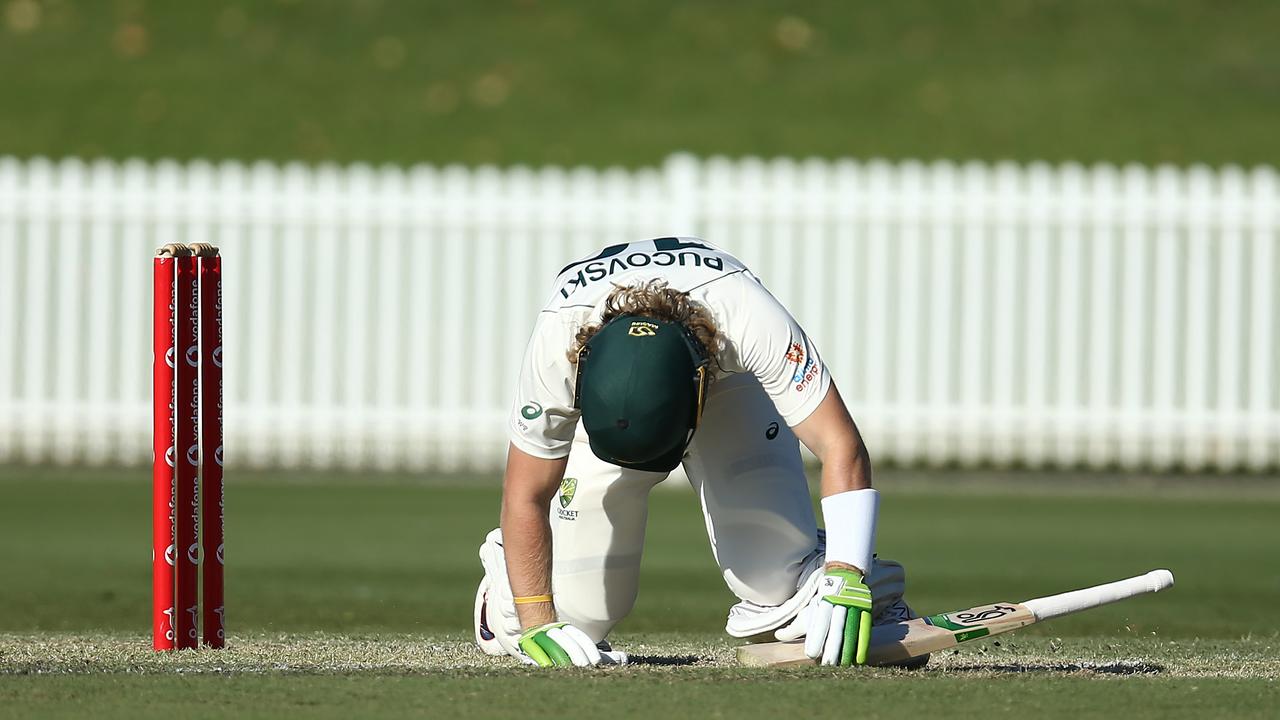Richard Hinds says Ashes whitewash and game's revival could be misleading
ONLY a few months ago cricket was in crisis, Richard Hinds wonders if Australia's Ashes revival was a little misleading.

Opinion
Don't miss out on the headlines from Opinion. Followed categories will be added to My News.
In past few weeks in the cricket nets near my house, I've seen kids abandon orthodox bowling actions to ape Mitchell Johnson's lethal sling.
I've seen them swing their bats as they walk to the wicket, take block, tap down imaginary blades of grass and copy with studied exaggeration the mannerisms of 'Pup', 'Buck' or another favourite.
Less fortunately, I've seen these impressionable youngsters attempt Dil-scoops, slog sweeps, ramps and the other symptoms of the Twenty20 disease that threaten to leave their techniques permanently scarred. (Personally, I blame the parents.)
Their equipment is much better, their approach more sophisticated and their language a touch fruitier. But what I've seen these past few weeks in far greater numbers than previous seasons is kids doing what we did (warning: Old Codger alert) in my day.
As evidence of a cricket revival goes, this might sound like the kind of shoddy anecdotal evidence used on either side of the global warming debate when real science is available. A few unusually warm days won't melt the polar ice-caps, but nor does a cold day in January mean that is not happening.
But whether it is the sheer unexpected joy of Australia's performance, the charismatic nature of a team of rejuvenated veterans and comeback kids or the consequence of an orchestrated campaign, cricket again seems cool. (Or some other word that is far cooler than ''cool''.)
Yet it is only a few months ago that another c-word was being applied to the game. Cricket was in crisis.
Australia had been thrashed 3-0 by England and, even for those of us who wrote them, reports from England that they had been ''more competitive than the results suggested'' seemed on the desperate side of optimistic.
The game's administration was under the microscope. Actually, given the poor results on the field and the feeling within the ranks that cricket remained ''male, pale and stale'', chief executive James Sutherland was like an ant under a magnifying glass.
Cricket couldn't compete with other sports to recruit first choice athletes. Cricket couldn't maintain the crowds and, more importantly, TV ratings required to justify its lucrative new media rights deal. Cricket would one day replaced by football as the major summer sport. Cricket remained too dependent on its Indian sugar daddies and would lose its soul.
Or so the vital signs seemed to indicate.
All of which makes this golden cricket summer more remarkable. Undoubtedly, it is Australia's incredible and unexpected revival that inspired a wave of interest in the game. But, quite obviously, that would not be possible if the game was of no interest.
The packed grandstands at Ashes Tests have provided a brilliant backdrop to Australia's feats. Particularly when you compare them with the virtually empty stadiums in which South Africa, New Zealand and Pakistan have played recent Test series.
But Ashes crowds can be a misleading indication of the game's general wellbeing. The same events culture that fills marquees at usually empty race courses during the spring and the autumn guaranteed big crowds at the SCG and MCG regardless of the state of the series or the nature of the combatants.
Television figures that showed, at its peak, an audience of almost 3 million saw Australia put England to the sword on the third day in Sydney was a more telling indication of - to borrow the marketing phrase - the ''traction'' this series gained.
Again, however, one-off success can provide a misleading indication of a sport's overall wellbeing. In the next two weeks, millions watch Serena Williams, Novak Djokovic and the tennis's other great names knock a ball over the net. But ask those trying to muster numbers at dwindling suburban clubs or to stop yet more city tennis courts being used for high-rise developments whether this is an accurate reflection of the sport's health.
The Ashes triumph has gone hand-in-glove with the Big Bash League's highly successful transfer to free-to-air television. Audiences of more than 800,000 have watched the premeditated slogging of muscular bladesmen and the ritual humiliation of otherwise worthy bowlers. A few might even have remembered the result of the game the next day - especially when the Sydney Thunder was playing.
You cannot deny the BBL's success has contributed significantly to cricket's summer surge. Even if, with first class cricket abandoned to make way for two months of whack and slather, there has been no opportunity to rehearse potential inclusions for the Test series in South Africa.
But whether it has been the Ashes triumph, the eminently likable nature of its perpetrators or some evening hit and giggle, the results are in the nets. Kids leaving the computer and having a hit.
This is how a lifelong association with the game is formed. Putting on the pads, not putting a bucket on your head.


